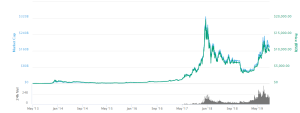Understanding Bitcoin’s Finite Supply: Mining, Lost Coins, and the Future
Dive deep into the fascinating world of Bitcoin. Discover why the total number of Bitcoins isn’t a simple answer, and explore the dynamic forces shaping its future. Uncover the secrets behind this revolutionary cryptocurrency!
The question of how many Bitcoins exist is deceptively simple. On the surface, it seems like a quick Google search away. However, delving deeper reveals a fascinating story of technological innovation, economic principles, and a future still being written. The answer is not a static number, but rather a complex interplay of factors that constantly shift and evolve. Understanding this dynamic is key to grasping the true nature of Bitcoin and its potential impact on the global financial landscape.
The Hard Cap: A Finite Resource
Unlike fiat currencies, which central banks can print at will, Bitcoin operates under a strict limit; The Bitcoin protocol dictates that a maximum of 21 million Bitcoins will ever be created. This pre-defined scarcity is a core element of Bitcoin’s design, intended to mimic the properties of precious metals like gold, and to safeguard against inflation. This fixed supply is not arbitrary; it’s a fundamental feature designed to ensure long-term value stability, in theory. The fixed supply contributes significantly to the volatility of Bitcoin’s price, increasing demand in periods of scarcity.
Understanding Bitcoin Mining
New Bitcoins are created through a process known as “mining.” Miners use powerful computers to solve complex mathematical problems, and the first miner to solve the problem is rewarded with a block of newly minted Bitcoins. The reward for successfully mining a block is halved approximately every four years. This halving mechanism is a crucial component of Bitcoin’s deflationary nature. It gradually reduces the rate at which new Bitcoins enter circulation, contributing to the overall scarcity.
Initially, the reward for mining a block was 50 Bitcoins. After the first halving, it became 25, then 12.5, and currently, it stands at 6.25 Bitcoins per block. This halving process will continue until all 21 million Bitcoins are mined, a process expected to complete sometime in the 2140s. This long-term process ensures a controlled and predictable supply.
Lost Bitcoins and Their Impact
A significant portion of the existing Bitcoins are considered “lost.” These are Bitcoins that are associated with private keys that have been lost, forgotten, or destroyed. These lost coins are effectively removed from circulation, further contributing to the scarcity of available Bitcoins. Estimating the exact number of lost Bitcoins is challenging, as there is no central registry tracking them. However, various estimates suggest that a substantial percentage of all mined Bitcoins are currently inaccessible.
The existence of lost Bitcoins adds another layer of complexity to determining the “circulating supply.” While the total number of Bitcoins is capped at 21 million, the actual number in active circulation is considerably less. This dynamic creates an interesting economic phenomenon, where the actual scarcity is potentially greater than the theoretical limit suggests. The impact of lost coins on the price of Bitcoin is a subject of ongoing debate among economists and cryptocurrency enthusiasts.
The Future of Bitcoin’s Supply
As the halving events continue, the rate at which new Bitcoins are added to the network slows down significantly. This gradual decrease in new supply is expected to increase Bitcoin’s value over time, particularly if demand remains high or increases. Several factors could influence this, including wider adoption, technological advancements, and regulatory changes. The interplay of these factors will determine the future trajectory of Bitcoin’s price and its overall impact on the global economy.
Furthermore, the development of layer-2 scaling solutions could potentially impact the perception of Bitcoin’s scarcity. These solutions aim to improve Bitcoin’s transaction speed and reduce fees, making it more accessible to a wider range of users. While these solutions don’t change the total supply of Bitcoin, they could increase its usability and therefore its demand, further influencing its price.
Beyond the Numbers: The Value Proposition
The question of “how many Bitcoins” shouldn’t be viewed solely through a numerical lens. It’s crucial to consider the underlying principles driving Bitcoin’s value proposition. Scarcity is a key element, but it’s not the only one. Bitcoin’s decentralized nature, its security features, and its potential to disrupt traditional financial systems all contribute to its appeal and its perceived value. The future of Bitcoin is intertwined with its ability to maintain and enhance these characteristics.
The decentralized nature of Bitcoin, secured by a vast network of miners, makes it resistant to censorship and manipulation by governments or central banks. This inherent resistance to centralized control is a significant factor in its appeal to many users. The transparent and immutable nature of the blockchain provides an auditable record of all transactions, enhancing trust and security.
Understanding the Implications
The finite supply of Bitcoin has profound implications for its long-term value. The scarcity, combined with growing adoption and increasing institutional investment, could lead to significant price appreciation over time. However, it’s important to remember that the cryptocurrency market is highly volatile, and several factors can influence its price significantly. Understanding these factors is crucial before making any investment decisions.
- Technological Advancements: Improvements in mining technology and the development of more efficient hardware could impact the mining process and the rate at which new Bitcoins are generated.
- Regulatory Landscape: Changes in government regulations concerning cryptocurrencies could significantly influence Bitcoin’s price and adoption rate.
- Market Sentiment: The overall sentiment of the market, influenced by news events and investor confidence, plays a crucial role in price fluctuations.
- Competition: The emergence of new cryptocurrencies and blockchain technologies could potentially impact Bitcoin’s dominance in the market.
The Uncertain Future
Predicting the future price of Bitcoin is inherently uncertain. The interplay of technological advancements, regulatory changes, market sentiment, and global economic conditions makes it extremely difficult to forecast its trajectory with any degree of certainty. However, the inherent scarcity of Bitcoin and its growing adoption suggest a potentially bright future for this groundbreaking cryptocurrency. Careful consideration of the risks and rewards is essential for anyone contemplating investment in Bitcoin.
- Global adoption could significantly increase demand, pushing prices upward.
- Technological breakthroughs might reduce transaction costs and increase efficiency.
- Increased regulation might bring stability but also hinder innovation and growth.
- Competition from other cryptocurrencies could erode Bitcoin’s market share.







